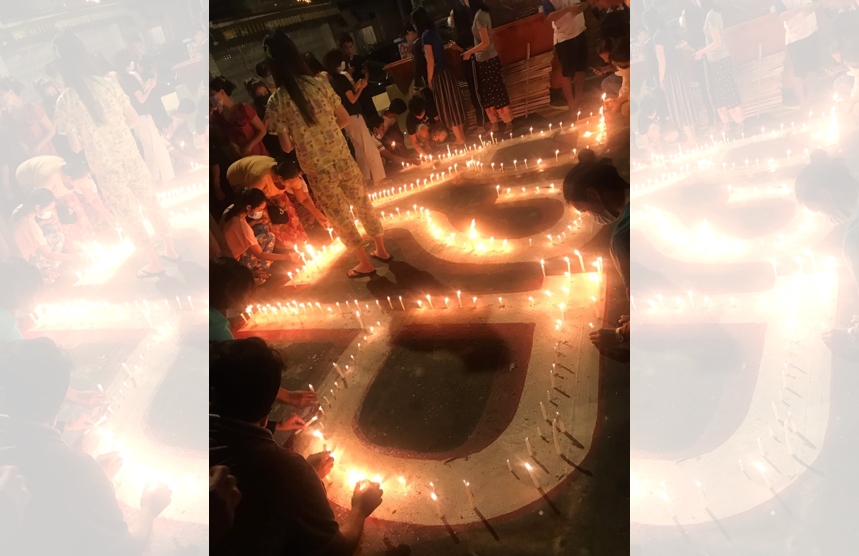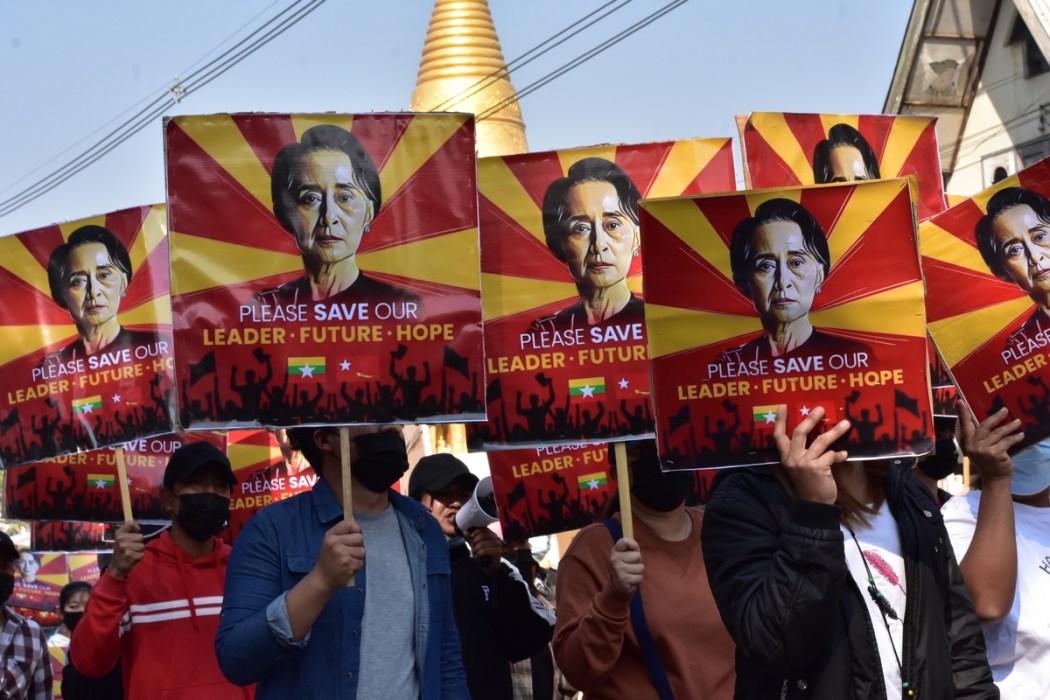Hongkonger Zoe and her partner Hein – a citizen of Myanmar – decided back in 2014 to move from the United States to the Southeast Asian country in hopes it was ready to take off after almost half a century of military rule.
The junta which had been in power since 1962 stepped aside to make way for a quasi-democratic government in 2011 and gradually opened up the one-time British colony.

The coup on February 1, and the detention of civilian leaders including Nobel Peace Prize laureate Aung San Suu Kyi and President U Win Myint, shocked and angered both Zoe and Hein, who used pseudonyms for fear of reprisals. The army stepped in after Suu Kyi’s National League for Democracy (NLD) won a landslide victory in a general election last November, which the military claimed was fraudulent.
The married couple in their early 30s joined tens of thousands of protesters who took to the streets starting on February 6 to oppose the coup. Chanting slogans and holding placards that read “Free our leader,” “Against military coup” and “Respect our votes,” they raised three-finger salutes as a symbol of solidarity and defiance.
“Since February, people have started to constantly do peaceful protests, to show their voices and where they stand. We stand for justice, not violence,” Hein said in a video interview with HKFP.

The daily demonstrations around the country have now lasted over a month and been answered with tear gas, rubber bullets, stun grenades and live ammunition. The crackdown has resulted in at least 70 deaths, according to United Nations human rights expert Thomas Andrews citing “credible reports” on Thursday.
The pair – who have a five -year-old son and live in central Yangon – have taken part in the demonstrations since the unrest erupted in early February. Asked if they were frontliners, Zoe and Hein said they were “in the middle.” They described the large-scale protests as “community-based,” saying more demonstrators are now gathering in smaller groups in their own townships.

Hein said the movement had no leader, which made it difficult for the military and police to fully clamp down on the protests.
“Everyone is a leader, everyone is a follower,” Hein said.
They couple said February 22 was a turning point in the weeks-long protests, as tens of thousands of citizens observed a nationwide strike despite a military warning against “riot and anarchy.” Zoe said more protesters donned protective gear including helmets, shields and respirators, reminiscent of the 2019 anti-extradition bill protests in Hong Kong.

People in Myanmar have experienced regular internet outages since the protests began. The couple said they have no access from 1 am to 9 am every day.
Hein said that when demonstrators managed to get online in the daytime, they would communicate on messaging platforms such as Telegram and Signal to share real-time information on the protests and police deployment. They would also turn to Twitter to spread messages to the international community, as many Hong Kong activists did.
Zoe said she knew many people in her home city compared Myanmar’s protests to the unrest in 2019. She said the biggest similarity was the basic demands of the people for freedom and democracy. It was frustrating that their demands were not heard.

“As a Hongkonger being in Myanmar… you can get quite emotional. You feel that kind of hopelessness sometimes,” she said. “They are not fighting for what they don’t have, they are fighting for what was taken away.”
The 32-year-old began to choke up when she talked about youngsters on the protest frontlines in Myanmar and Hong Kong respectively. But she said Myanmar’s youth were backed up by different generations, while Hong Kong’s student protesters did not see such support.
“A lot of people mention that Gen Z is fighting, but you also see a lot of posts saying ‘Generation X, Y, Z – we fight together.’ But in Hong Kong, we didn’t have the privilege to fight together,” she said.

Zoe said that while the Myanmar protesters had learned tactics from the citywide protests, she believed they were relatively more peaceful and avoided violence. Hein said some locals feared that if the clashes with police and troops escalated, the junta may declare the protest movement a “civil war,” preventing intervention by international organisations.
“[Protesters] only have one hope now, which is the UN… once those hopes are gone, and we realise that we are on our own, then I think there will some kind of counter-attack against the coup,” he said.

The couple had hoped to build a life in Myanmar in an era of civilian rule. In light of the country’s worst turmoil in over a decade, Hein – who grew up when the armed forces were in power – said he would not abandon his home until there was “some sort of definite answer.”
He said he wanted to “fight till the end,” and hoped the movement could achieve victory – which he defined as seeing a democratically-elected government regaining control.
“If we ever leave the city, it will definitely be because of the kid,” Hein said. “[I]f we lose, things may be even worse than when I was a kid.”

Asked if she had a message for Hongkongers who showed solidarity with the Myanmar protesters, Zoe said many of her friends in the country realised they had not shown enough support for Hong Kong more than a year ago.
“Many said that they guaranteed and promised that if there is one day when Hong Kong is fighting for justice again… a lot of people in Myanmar will never [overlook] the support that Hong Kong needs.”
Support HKFP | Policies & Ethics | Error/typo? | Contact Us | Newsletter | Transparency & Annual Report | Apps
Help safeguard press freedom & keep HKFP free for all readers by supporting our team

LATEST FROM HKFP
HKFP has an impartial stance, transparent funding, and balanced coverage guided by an Ethics Code and Corrections Policy.
Support press freedom & help us surpass 1,000 monthly Patrons: 100% independent, governed by an ethics code & not-for-profit.










